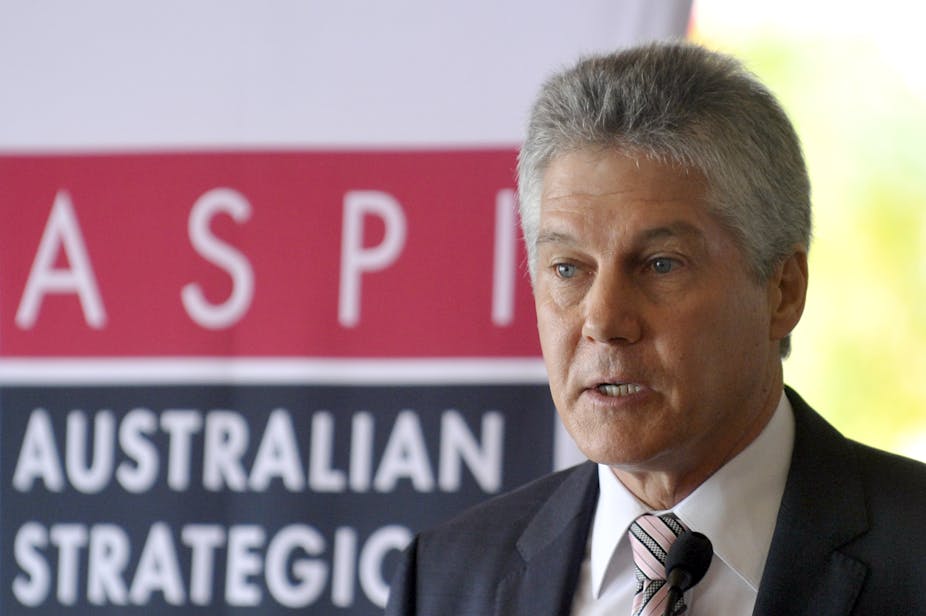The government will produce its 2013 Defence White Paper in the coming fortnight - a document that in ambition will be a shadow of its 2009 predecessor.
In focus, its eyes will be on the region. In diplomacy, its language will be careful, where 2009’s was blunt and offended the Chinese. In funding, it will heavily reflect the straitened fiscal times.
The deadline for the White Paper was the end of June but the government wants it out ahead of the May 14 budget, so it doesn’t clutter post-budget discussion of more electorally saleable issues.
The 2009 paper was Ruddism at its most robust. It projected an Australia with a big footprint. While the GFC had hit it had not entered the mindset for defence; 3% annual real growth was envisaged to 2017-18 and then 2.2% a year out to 2030.
Most provocatively, the paper was infused with Kevin Rudd’s deep suspicion of China’s long-term intentions. Rudd, as he once said to Hillary Clinton, thinks of himself as a “brutal realist” on China.
The paper told the Chinese they needed explain their military modernisation better if their neighbours weren’t to be alarmed. The portrayal of China as a threat was clear.
The Chinese were outraged. As was documented in a WikiLeaks cable Mike Pezzullo, the lead author of the paper, recounted to the Americans that he had been dressed down when he briefed the Chinese ahead of its release.
In 2011, the Chinese were unimpressed by the Gillard government deepening Australia’s military relationship with the US as part of the American “pivot” (now called a rebalance) to our region, but on the whole Beijing has found Julia Gillard more congenial than the Sinophile Rudd.
Gillard’s recent China trip was a resounding success. Out of it came the establishment of a formal annual leadership dialogue, closer military engagement and other initiatives. This improved atmosphere won’t be disturbed by the White Paper. There will be no lectures to Beijing.
Last week Defence Minister Stephen Smith listed the developments internationally and domestically since 2009 that the new paper addresses. These were
The Australian Defence Force’s drawdown from Afghanistan and elsewhere;
The ongoing strategic shift to the Indo-Pacific and Asia Pacific, particular the shift of economic weight;
The US rebalance to the Asia Pacific, and Australia’s enhanced practical co-operation with America;
The Australian Force Posture Review; and
The ongoing adverse effects of the global financial crisis.
Where once the terminology was mainly “Asia Pacific”, the paper will employ the newer term “Indo-Pacific”, in identifying Australia’s strategic area of interest.
As the government’s January national security strategy paper (titled Strong and Secure) explained: “‘Indo-Pacific’ emphasises the growing significance of this geographic corridor [spanning the Indian Ocean to the western Pacific Ocean] and of India, with Australia increasingly considering its interests through this lens, as well as the Asia-Pacific”.
Special mention will be made of the north west of Australia with its huge resource development. A (leaked) December draft of the White Paper said one use of drawdowns from overseas operations would be “to increase our presence in the north and north-west of Australia”, which was recommended by the Defence Posture Review.
The paper comes as the ADF steps back to home soil from Afghanistan, Timor-Leste and the Solomon Islands.
The draft notes that we’ve been through a “high tempo” period, in which the ADF has performed about 100 operations since 1999 and is now starting a “major transition” with the reduction of overseas operational commitments. But the transition must be managed carefully to avoid the ADF being “hollowed out” – it recalled the hit to capability after Vietnam.
After a major deployment such as Afghanistan, a financial consolidation would be expected but in this case, it came before the scale down of the engagement and it has been driven entirely by wider fiscal factors.
Of the changes since 2009, the big spending cut has been the dramatic local development. Last year’s budget reduced defence to 1.56% of GDP (in the mid year review it rose to 1.6%). The budget slashed $5.5 billion from defence over four years, mostly from the capital area (equipment and construction).
Neither White Paper nor budget will provide tangible relief on the money front; the paper is expected to repeat the promise in its draft to increase funding towards the objective of 2% of GDP “as soon as fiscal circumstances allow”.
The draft also said the government would seek to achieve an average of 3% real annual growth (no time given) but it is not known whether this has survived.
The Coalition, while critical of the government’s economies, is itself having to deal in aspirations. It says a Coalition government would restore a 3% real growth rate as soon as it could, and aim to take spending back to 2% of GDP.
Despite the rhetoric the Opposition will deploy when the White Paper comes out, the gap between Coalition and Labor on national security and defence appears quite narrow as we approach the election.
Both sides are deeply committed to the American alliance. (How Tony Abbott must have wished he could have been the one to conclude the 2011 agreement for the US’s increased use of Australian facilities).
Labor and the Coalition are both strong exponents of the the Asian century, although Abbott has fluffed in handling the issue of foreign investment from China. Abbott stresses he is regionally focused (Jakarta not Geneva, as he puts it).
And each side knows the major determinant of defence spending in times like this is what you can afford – and that is much more modest than it used to be.

